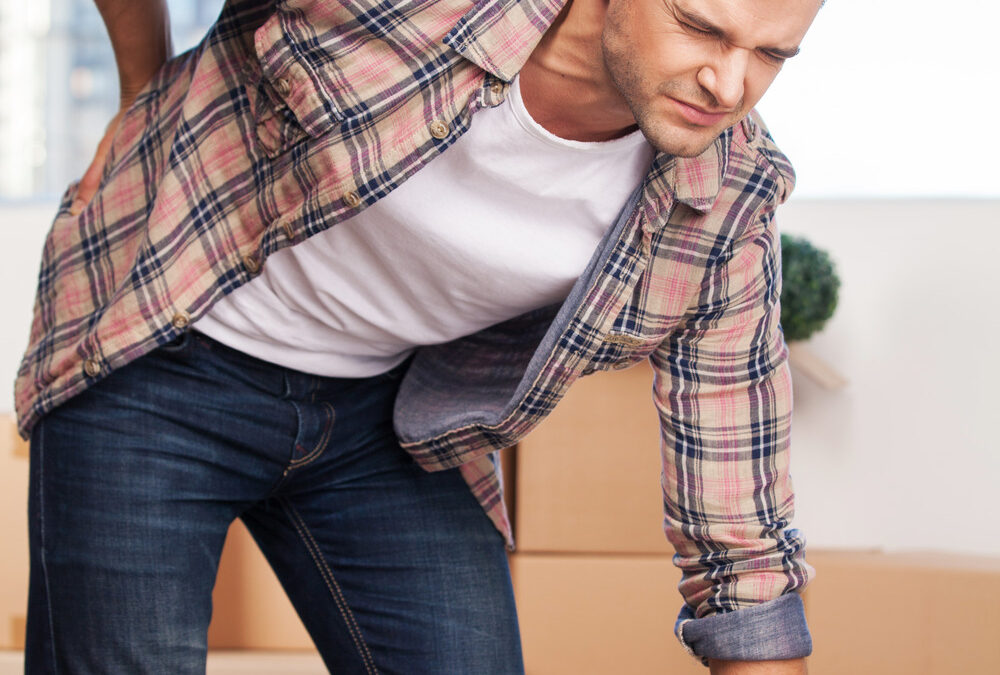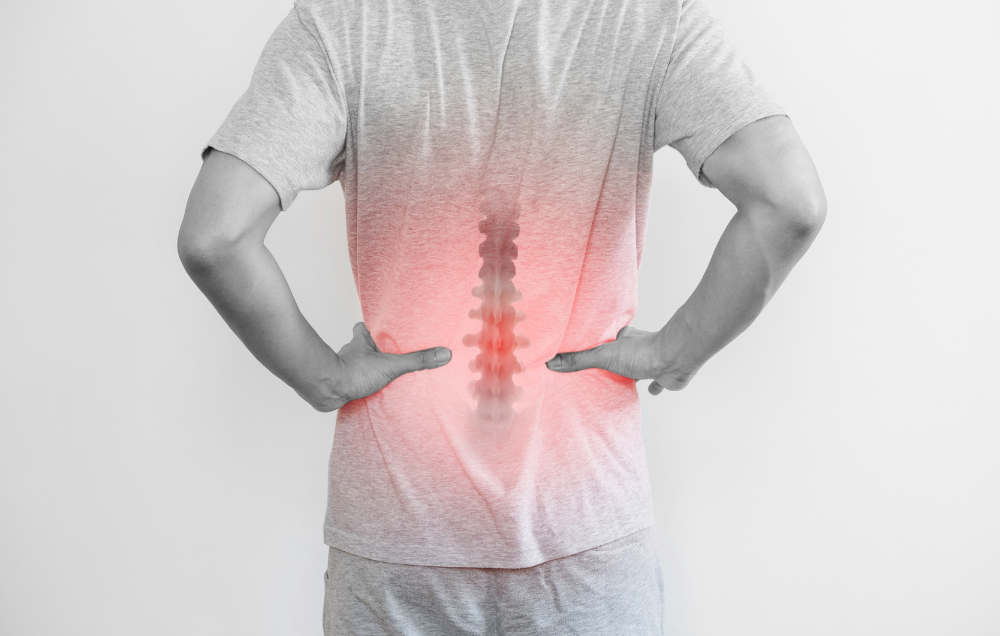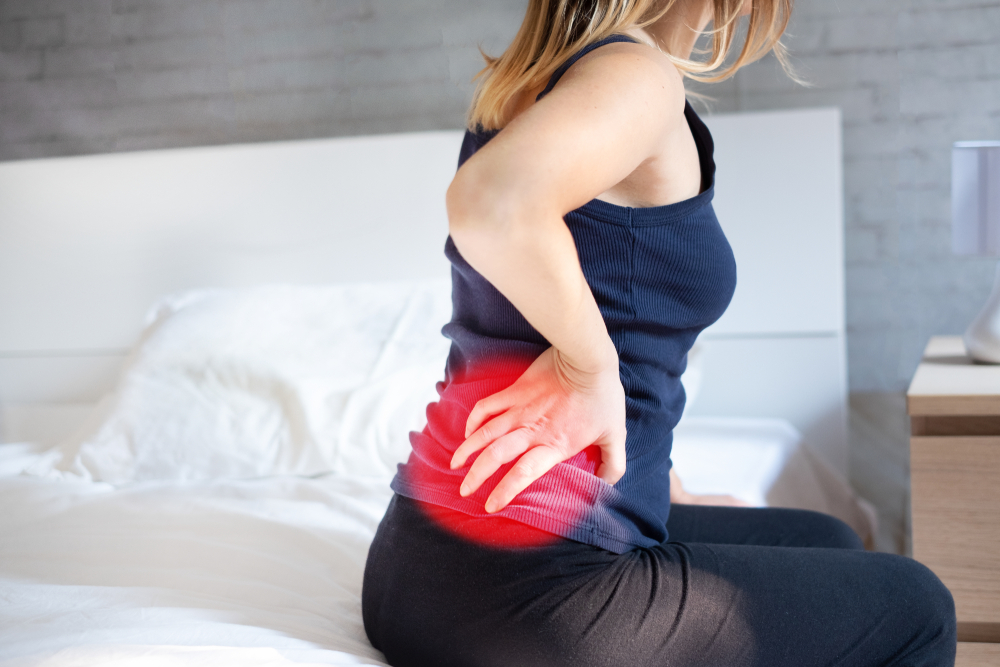Contents
Are you experiencing arthritis pain and other symptoms in your lower back? Physical therapy may help you find relief. If you experience arthritis pain, you’re not alone. In 2022, the age-adjusted prevalence of diagnosed arthritis in adults was 18.9%, according to data from the Centers for Disease Control and Prevention (CDC). Arthritis is an umbrella term for multiple chronic conditions that involve joint inflammation. The most prominent forms are osteoarthritis and rheumatoid arthritis. Both of these conditions can affect the lower back, with osteoarthritis being especially common. Osteoarthritis involves the degeneration of cartilage around joints. When this occurs along the back, it can cause friction between bones in the spine. You may experience symptoms including stiffness and chronic lower back pain.
Though arthritis cannot be cured, it can be managed. With physical therapy, you can keep your symptoms under control and continue living a fulfilling life. Not sure what treatment might entail? Learning about some of the most effective PT treatments for lower back arthritis can help you get an idea of what to expect on your own treatment journey.
What are the best physical therapy treatments for arthritis in the lower back?
- Manual therapy — Manual therapy encompasses a range of techniques involving hands-on physical therapy treatment. These techniques include joint mobilization, joint manipulation and trigger point therapy. When addressing lower back arthritis, your physical therapist may utilize manual techniques that focus on your joints. In addition to directly addressing your arthritis, manual therapy can also help address other negative symptoms. Arthritis can come with a range of symptoms and lead to discomfort throughout the body. For example, lower back arthritis can put extra strain on the muscles in your upper back. Over time, this can lead to increased muscle tension and the formation of muscle knots, also called trigger points. With trigger point therapy, your physical therapist can release these knots and provide relief. Addressing symptoms as they develop is important for maintaining a good quality of life and avoiding more significant complications in the future.
- Joint mobilization — Joint mobilization is one of the most useful manual therapy techniques for managing arthritis. It can help improve your mobility, combating any stiffness caused by your arthritis. This technique involves your physical therapist using their hands to facilitate joint movements. If you’re trying to improve your range of motion but can’t make the right stretches on your own, assisted stretches can be beneficial. The lower back contains the sacroiliac (SI) joints. The SI joints connect your lower back to your pelvis. If you’re experiencing lower back arthritis symptoms, your condition likely affects your SI joints. Manual joint manipulation and mobilization can help reduce the irritation of these joints. This may reduce your pain, stiffness and other symptoms.
- Aquatic therapy — Exercise can be a great way to address arthritis symptoms. However, sometimes exercise is counterproductive. High-impact exercises can put more stress on your joints, leading to worsened symptoms. If you want to get the benefits of exercise without the potential downsides, aquatic therapy can be a great solution. Aquatic therapy involves aerobic exercise sessions conducted in a pool. The aquatic environment keeps you buoyant, meaning your joints aren’t bearing much weight. At the same time, the pressure of the water surrounding your body can promote better circulation. This can reduce swelling and accelerate healing of injured tissue. During aquatic therapy sessions, your physical therapist can help you practice targeted exercises in a low-impact aquatic environment.
- Electrical stimulation — Arthritis can come with significant chronic pain. Managing this pain can be key to keeping you comfortable and allowing you to focus on the big-picture aspects of your treatment journey. If you’re looking for rapid pain relief, talk to your physical therapist about transcutaneous electrical neuromuscular stimulation (TENS). This treatment method works by disrupting pain signals before they reach your brain. This can help reduce the amount of pain you experience. Electrical stimulation can also help relax muscle tissue, which can be useful for addressing tension in muscles supporting your lower back.
- Body mechanics education — Your body mechanics refers to the way you move through the world. This includes your typical posture and gait. Posture and gait can have a big impact on your arthritis symptoms. Poor posture can lead to spinal alignment issues, aggravating the joints already affected by arthritis. An unbalanced gait can put excess pressure on your lower back, leading to muscle strain and other harmful effects. To avoid making your arthritis symptoms worse, it’s important to practice proper body mechanics. Your physical therapist can educate you on proper body mechanics and help you realign your posture.
How to treat arthritis in your lower back: 3 effective exercises
Do you want to take an active role in managing your arthritis? Your physical therapist can help you practice targeted exercises. The exercises your physical therapist recommends will be based on your condition, arthritis location and wellness goals. If you’re experiencing the symptoms of lower back arthritis, some exercises that may be effective include:
- Pelvic tilts — Are you feeling a lot of tension in your lower back? Pelvic tilts work to reduce tension around the lower back and pelvis. This exercise can also improve flexibility, reducing the risk of localized tension in the future. To do pelvic tilts, lie on your back with your knees bent. Keep your feet flat and legs static throughout the exercise. Start by tightening your abdomen and pressing your back flat against the floor. While pressing your back down, try to tilt your pelvis up. You may feel a stretch around your hips and core muscles. Hold for a few seconds; then release, relax and repeat.
- Cat-cow stretch — Improving spine flexibility is important for managing spinal arthritis symptoms. If you’re experiencing arthritis pain in your lower back, spinal stretches like the cat-cow stretch can be highly beneficial. To do the cat-cow stretch, start with your hands and knees planted on the floor. Keep your back straightened laterally so that your body forms a square with the floor. From here, round your back toward the floor and tilt your pelvis to enter the cow pose. Hold for a few seconds. When you’re ready, arch your back toward the ceiling to enter the cat pose. Hold this position for a few seconds as well. Then you can return to the starting position and repeat the sequence. The cat and cow positions both flex the spine in different directions, increasing spinal mobility and relieving tension.
- Bridges — The lower back muscles play a critical role in supporting the lower part of your spine. When these muscles are weak, your spine may not receive enough support. This can exacerbate arthritis symptoms such as pain and stiffness. To keep your arthritis under control, keeping your lower back muscles strong and functional can be essential. Bridges are among the best exercises for strengthening the lower back. This exercise also engages the glutes and pelvic floor muscles, providing a wide range of benefits. To do bridges, lie on your back. Bend your knees and keep your feet flat on the floor. Keeping your shoulders on the floor, lift your hips up to create a bridge with your body. You should feel this exercise engage your hips, upper legs and lower back. After holding the bridge for 10-15 seconds, you can gradually lower back to the starting position.
Lattimore Physical Therapy can help address your lower back arthritis
If you’re ready to start managing your lower back arthritis, Lattimore Physical Therapy can help. Our team has decades of experience treating injuries and painful chronic conditions. We offer a range of treatments designed to manage symptoms like pain and stiffness, from specialized manual therapy techniques to modalities like ultrasound therapy. With our help, you can slow down the progression of your arthritis and reduce your symptoms.
Contact our team today for more information about arthritis treatments or to schedule an initial appointment.



